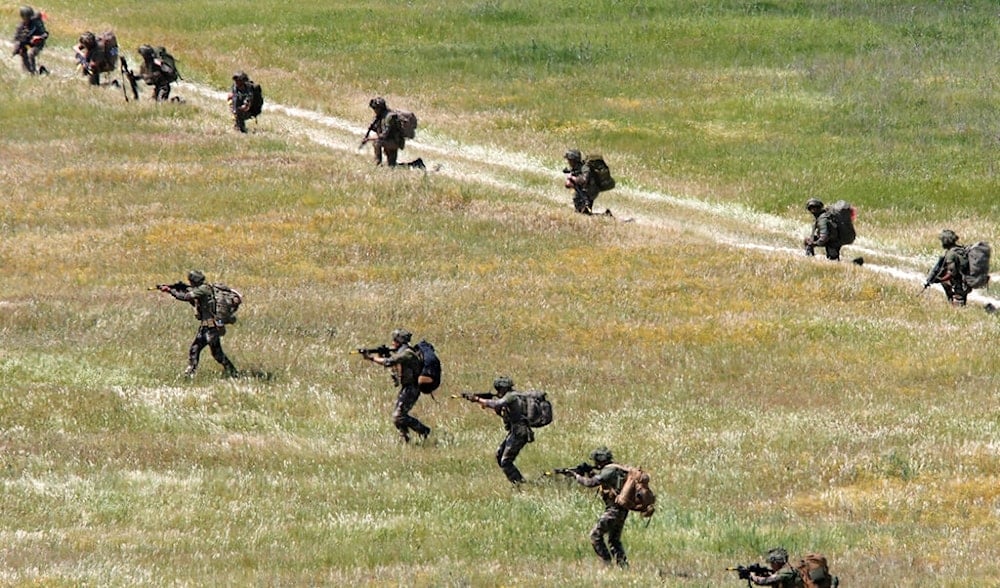1,200 soldiers from 4 NATO states train river crossing in Germany
Around 1,200 troops and 500 vehicles from NATO allies are participating in the Grand Crossing exercise in Germany, practicing river crossings and bridge-building over the Rhine and Weser.
-

British soldiers from the 16 Air Assault Brigade take part in the Swift Response 22 military exercise at the Krivolak army training polygon in the central part of North Macedonia, May 12, 2022 (AP)
Approximately 1,200 soldiers and 500 pieces of military hardware from four NATO member states have commenced the Grand Crossing exercise in Germany. According to German broadcaster NTV, the exercise began on Saturday and involves military personnel from Germany, the United Kingdom, the Netherlands, and Italy.
The NATO military drills in Germany are focused on training troops to conduct coordinated river crossing operations. As part of the Grand Crossing exercise, soldiers are practicing the use of heavy vehicles to traverse large rivers, specifically the Rhine. The German military highlighted the importance of these drills in maintaining operational readiness for complex logistical operations.
The 14-day NATO river crossing exercise includes the construction of ferry crossings and temporary military bridges. These structures will be deployed across major waterways, including the Rhine and the Weser, Germany's third-largest river. The drills aim to enhance the alliance's capability to rapidly deploy and maneuver forces across difficult terrain.
A significant component of the exercise is the building of temporary military bridges, which will enable armored and support vehicles to move efficiently across river barriers. This training is seen as critical to strengthening NATO's joint operations capability in Europe, ensuring that allied forces can effectively respond to various operational scenarios.
NATO agrees to hike defense funds
Recently, NATO allies agreed to significantly increase defense spending, making it a major foreign policy win for US President Donald Trump, who had been urging the coalition to increase its defense budget since assuming office for his second term.
In a show of unity aimed at deterring Russia, Trump joined other leaders in reaffirming NATO’s core commitment to collective defense under Article Five, declaring that an attack on one member is an attack on all. The final summit declaration described this promise as "ironclad".
Behind closed doors, diplomats said Trump emphasized the US leadership role and urged allies to use their increased budgets to buy American-made weapons.
The deal represents a compromise: while allowing Trump to celebrate a win, it offers flexibility to European nations facing financial constraints. Under the agreement, members will aim to reach 3.5% of GDP in direct defense spending by 2035, with an additional 1.5% directed toward broader security areas like critical infrastructure.
Read more: Rutte causes stir calling Trump 'Daddy' at NATO summit

 3 Min Read
3 Min Read










